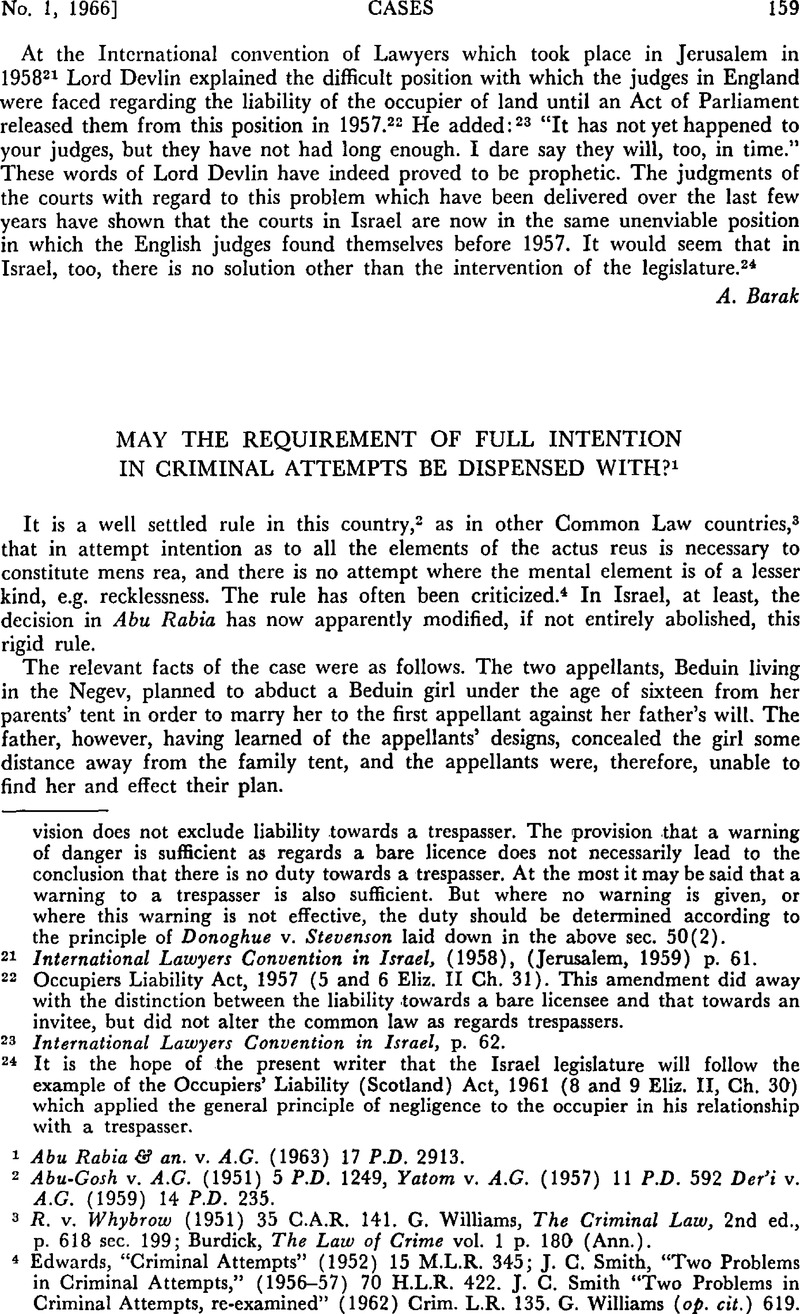No CrossRef data available.
Published online by Cambridge University Press: 12 February 2016

2 Abu-Gosh v. A.G. (1951) 5 P.D. 1249, Yatom v. A.G. (1957) 11 P.D. 592 Der'i v. A.G. (1959) 14 P.D. 235.
3 R. v. Whybrow (1951) 35 C.A.R. 141. Williams, G., The Criminal Law, 2nd ed., p. 618 sec. 199Google Scholar; Burdick, , The Law of Crime vol. 1 p. 180 (Ann.)Google Scholar.
4 Edwards, “Criminal Attempts” (1952) 15 M.L.R. 345; J. C Smith, “Two Problems in Criminal Attempts,” (1956–57) 70 H.L.R. 422. J. C Smith “Two Problems in Criminal Attempts, re-examined” (1962) Crim. L.R. 135. G. Williams (op. cit.) 619.
5 Criminal Code Ordinance 1936, sec. 253: “Any person who takes or entices any minor under fourteen years of age if a male, or under sixteen years of age if a female…out of the keeping of the lawful guardian of such minor…without the consent of such guardian is said to abduct such minor…”. Sec. 255: “A person who abducts any person…from lawful guardianship is guilty of a felony and is liable for imprisonment for seven years.”
6 (1875) L.R. 8 C.C.R. 154. The main reason being the severe punishment attached of the crime of abduction (7 years' imprisonment).
7 The Court cited J. C. Smith, “The guilty mind in the Criminal Law” (1960) 76 L.Q.R. 78.
8 “Two Problems in Criminal Attempts” (1956–57) 70 H.L.R. 422, 426: “Two Problems in Criminal Attempts, re-examined” (1962) 46, Crim. L.R. 135. These articles were not cited to or by the Court. The same view has been adopted in sec. 501(1) of the Tentative Draft of the American Law Institute.
9 Supra, n. 6.
10 See G. Williams (op. cit.) sec. 169.